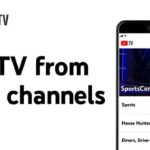“What do you think about district pacing guides?” It’s a question frequently posed, and to truly address it, we must delve into the essence of pacing itself, drawing parallels from competitive racing. Consider track and field, specifically the mile run. My daughter, a dedicated runner, is striving to break the 5-minute mile barrier. Mathematically, this requires four laps at 75 seconds each. However, real races are rarely so uniform. The initial surge of adrenaline or hesitation in the first 200 meters often skews the first lap’s pace, making it faster or slower than ideal for a runner aiming for a personal best or victory.
A start that’s too rapid can deplete oxygen reserves, causing a pace drop later in the race. Conversely, a slow start might leave insufficient energy for a strong finish, a tactic my daughter often employs. To achieve her sub-five-minute goal, she needs a strategic Movable Pacing Guide. This isn’t about rigidly sticking to 75-second laps from the start. Instead, it’s about understanding her target – the 5-minute mile – and dynamically adjusting her pace throughout the race based on real-time feedback. Her ideal movable pacing guide might begin with a slightly slower 78-second first lap, followed by consistent 75-76 second middle laps, reserving energy for a powerful 68-70 second final lap.
This illustrates that an effective pacing guide is not static but dynamic. It’s a constant interplay between a desired pace and the actual pace, requiring adjustments to stay “on track” for optimal performance. Success hinges not just on pre-race training but also on the ability to interpret “split times” provided by her coach. These splits are crucial data points, informing her whether to accelerate or decelerate to maintain her target range. The movable pacing guide adapts based on these real-time assessments.
This detailed analogy is crucial because it highlights the fundamental flaw in many school pacing guides. These guides, often mandated by districts, prescribe rigid timelines for content coverage, fundamentally misunderstanding the nature of pacing in learning. School pacing guides commonly confuse the teacher’s pace of delivering information with the learner’s pace of truly understanding and internalizing knowledge – a pace that inherently requires flexibility and adjustment to meet year-end learning objectives.
Typical district or school curriculum pacing guides often resemble the example below, dictating a strict timeline for covering state standards and textbook chapters.
This type of rigid timeline dictates when specific state standards should be “covered” and which textbook chapters should be assigned within a given timeframe. But here’s the crucial disconnect: pacing, in its true sense, should be about the learner setting the pace, much like in track and field. After all, it is the student, not the teacher, who must ultimately meet the standards. These so-called pacing guides fail to provide any direction for learners on how to ensure they achieve the highest-level standards by the end of the academic year.
Furthermore, these guides offer no contingency plans or advice for educators when students fall behind the prescribed pace or perform poorly on interim assessments. There’s no built-in mechanism for adjustment if assessments reveal learning gaps. Most critically, the focus remains solely on content delivery schedules, neglecting the most effective instructional strategies and assessments needed to ensure students are actually keeping pace with learning, not just content coverage.
The California Department of Education offers an explanation for such pacing guides, which unfortunately compounds the initial misunderstanding:
In contrast to curriculum maps, pacing guides are like timelines showing what each teaching team plans to cover over the course of a year. Each subject area follows a logical sequence within a grade level and between grade levels. To help teachers provide the same content to each student no matter which school he or she attends…the State Board-adopted instructional materials come with a publisher’s suggested planning guide. The materials sequence the content standards in a logical and progressive manner. It is the responsibility of both the district and the school to collaboratively review and modify the publisher’s planning guides to include in the local district pacing guides.
Let’s examine some of the problematic assumptions embedded in this explanation:
- “They are like timelines…” This begs the question: how is a pacing guide distinct from a simple timeline? And how does a timeline inherently translate into a guide for pacing learning?
- “What each teaching team plans to cover…” Planning to “cover” content is not synonymous with ensuring students actually achieve learning outcomes. What happens when the “plan” reveals that students are not grasping key concepts? The traditional pacing guide offers no answer.
- “To help teachers provide the same content to each student no matter which school he or she attends…” This suggests that equity is achieved merely by delivering the same content to all students, regardless of whether they are actually learning it. True equity should focus on equitable outcomes, not just uniform content delivery.
- “Instructional materials come with a publisher’s suggested planning guide…” The proliferation of terms – planning guide, pacing guide, timeline, syllabus – highlights the confusion. Furthermore, given that textbooks are often inadequate as a complete curriculum, why should publisher-suggested guides be central to pacing decisions? Especially when many textbooks are not designed “backward” from high-level state standards in a spiraling, reinforcing manner.
- “The materials sequence the content standards in a logical and progressive manner.” While logical sequencing is important, the implication that each standard should be “covered” once in a linear progression is deeply flawed. This approach reduces standards to mere low-level skills or facts, suggesting they are equally important and can be mastered through single exposure. This fundamentally misunderstands the depth and complexity of standards.
Returning to the sports analogy, dictating content coverage on a rigid schedule is akin to demanding that my daughter simply accumulate miles run each month, irrespective of her speed, race performance, or progress towards her goals. It’s an arbitrary schedule of inputs, disconnected from desired outcomes. Imagine a football coach declaring, “My game plan dictates X and Y, and my practice schedule for the year is a, b, c…z until the season ends – regardless of our game performance.” Effective coaches, however, constantly adjust practices and game strategies based on real-time results and performance data.
The link between a genuine movable pacing guide and formative assessment is crucial. Calling interim tests that are not used to inform instruction and adjust pace “formative” is as misguided as labeling a content coverage calendar a movable pacing guide for achieving learning results. A true movable pacing guide, in contrast, would offer guidance on which lessons and units to emphasize, de-emphasize, revisit, or even skip based on formative assessment data and year-end learning goals.
Genuine pacing, as the track example underscores, is about how the learner sets, monitors, and adjusts their pace, guided by results, to achieve a desired outcome. It cannot be artificially imposed from the outset as a fixed schedule of inputs, oblivious to the realities of how people learn and the insights from formative assessments.
The example from Denver Public Schools demonstrates a step towards a more effective approach. While it doesn’t fully articulate how to monitor and adjust pace dynamically, it prioritizes content and suggests adjustments in an accessible way.
Note the asterisks and their meaning: Indicates priority lesson. If you fall behind, go to next priority lesson. (Adding a column explaining why a lesson is prioritized would further enhance its utility).
In Schooling by Design, we advocated for curriculum documents to include something far more valuable than input-driven pacing guides: troubleshooting guides. These guides would provide practical advice on how to respond when planned units are not yielding the intended learning outcomes. Such guidance would be significantly more useful to teachers than arbitrary, inflexible timelines.
In conclusion, the move towards movable pacing guides is a shift from rigid, input-focused timelines to flexible, learner-centered approaches. It demands that we prioritize student learning pace over teacher content delivery pace, utilize formative assessment to dynamically adjust instruction, and equip educators with the tools and guidance to troubleshoot learning challenges effectively. Only then can pacing guides become truly valuable instruments in fostering meaningful and equitable learning for all students.
P.S. Jane David’s insightful article on pacing issues, published a few years ago in Educational Leadership, can be accessed here.

